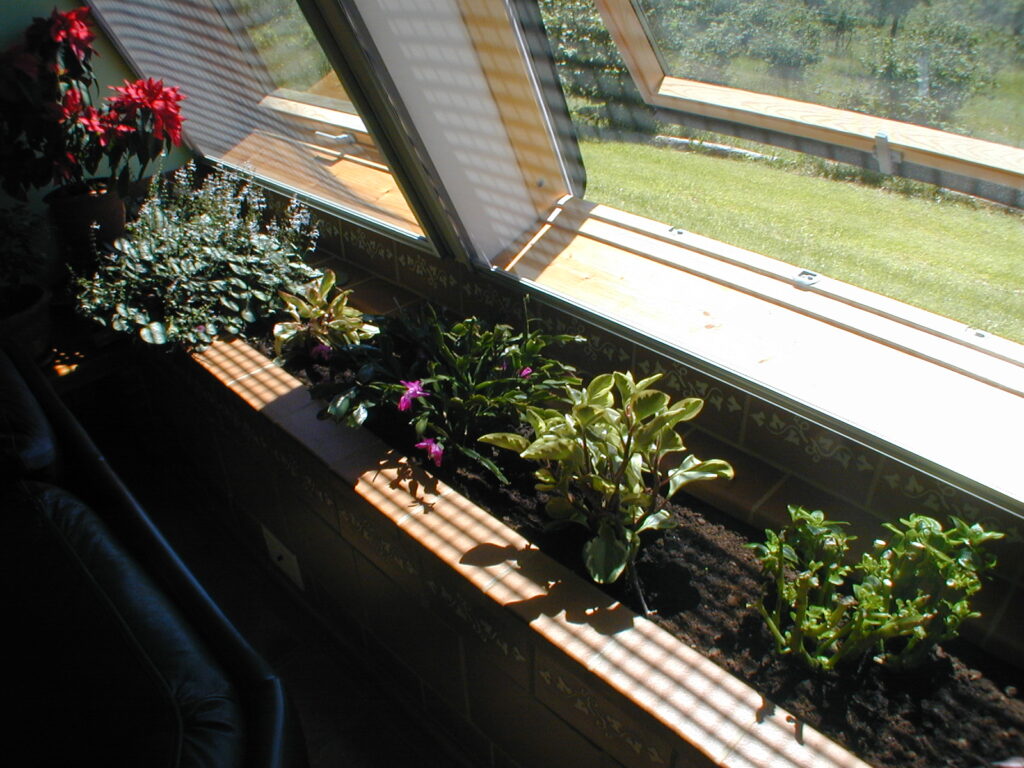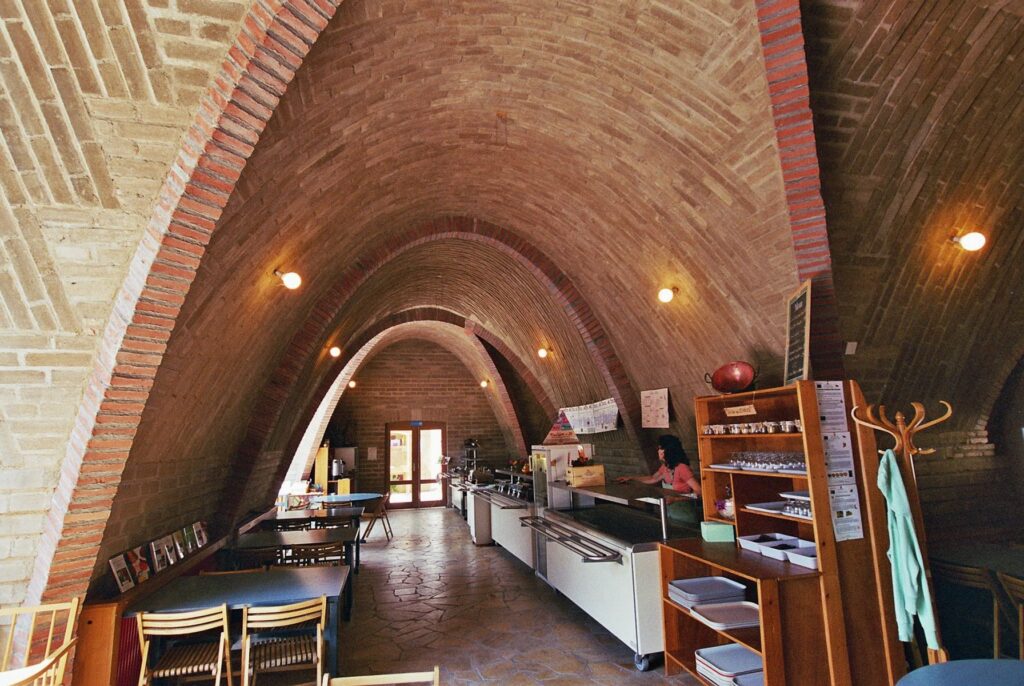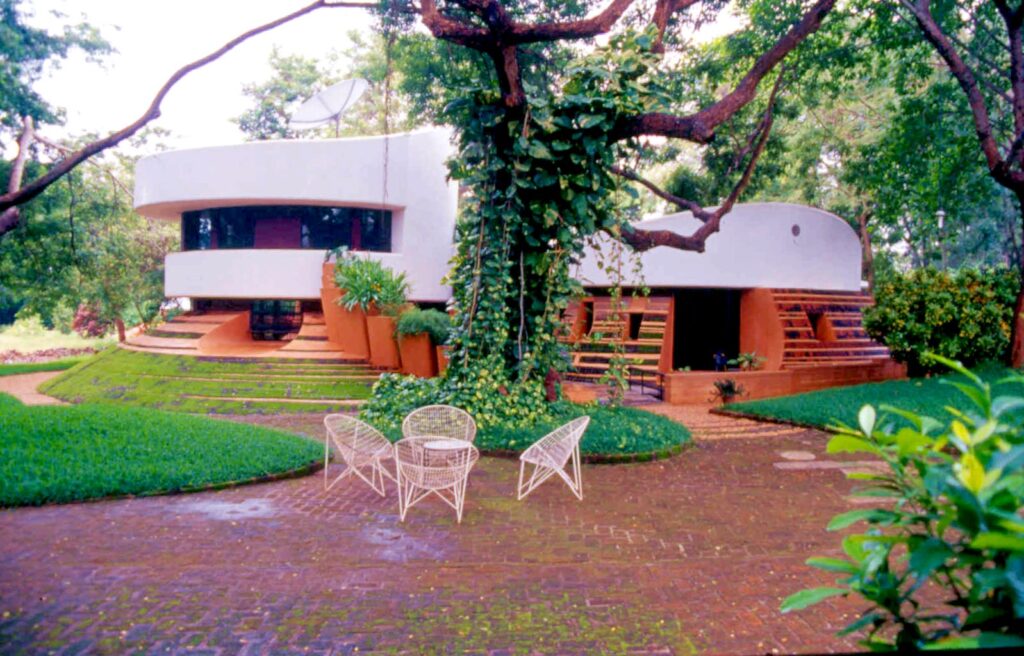Regenerative Architecture
- Clean energies
- Permaculture
- Bioclimatism
- Project suit to the uses
- Harmonic design and subtle energies
- Water management
- Biocompatible materials and bioconstruction
- Environmental management systems
- Creativity, cultural patterns and bio-mimesis

Clean Energy
Space – Energy – Information, that’s what form the universe.
Electricity is a high intensity energy that helps us in work and daily life in multiple ways, in engines, in heat and cold generation, in pumps and condensers, as well as we can use it as an information vehicle in devices such as computers and phones. Today we are highly dependent on it, and for that reason we must have local generators of this type of energy.
There are several technologies, the best known, hydraulic turbines, aerogenerators or photovoltaic panels.
Then we must store it or drive it to the equipment we use in the house, work or vehicles.
We also use it fairly intelligently to produce sounds, lighting and sensing devices normally connected to IT teams.
And yet this same energy can generate risks of both electrocution, fire and radiation and induction that are highly dangerous. So it is very useful, but we must put controls limiting the high health risk they offer.
Permaculture

The space of humans is different from the rest of the animals because the agriculture. All have their nests, and their burrows, but none modifies as widely the landscape as man and his agriculture. The design of the fields and cultures is the interland between the city and the forest. It is also the way to maintain our civilization by generating the food we want, instead of the food that nature gives us. In this harness the natural resources of fertility, the sun and rain, for our crops, we must be as efficient and respectful as the best of the learned artists in any musical instrument, the best of the painters the best of architects.
Permaculture is one of the great tools for this understanding nature working harmoniously for our needs without destroying it, and together with it the synotropic agriculture, the scale of permanence, the ecological footprint, the observance of cyclical processes and many others

Bioclimatism
Among the broad range of energy of the unified spectrum, from the electricity at 50Hz (extremely low) to the magnetism of more than 1030 Hz, (1022 gHz), we have a wide variety of energy types, of which the most abundant is heat, around 1014 Hz, which we ourselves, as warm-blooded humans, we generate while alive. Heat is essential for life, and the sun, climate, house, clothing, and kitchen fire are the product of that vital energy.
Collecting solar heat is relatively easy, stocking this heat has about complexity, but all material has its characteristics of known thermal behavior, since heat storage, insulation, or re-emission in time are known concepts that we will use in the construction of houses and clothing for example, even in the winter and summer diet we take into account these characteristics. And so designing the buildings according to these knowledge of basic physics saves us external energy, vital energy and over all provides well-being.
The building materials, together with drawings that contemplate the solar paths allow today to heat and cool the interior environment of a building passively.
The greenhouse effect by changing the frequency between the absorption of a material and the re-emission of heat allows this natural heating.
Just as it is also possible to generate fresh air currents inside the house, taking advantage of the rise of hot air by depression, allow to cool the houses passively.
Several techniques are useful for these hot air treatments: Thermal inertia, Canadian wells, greenhouses, vegetable shadows, moving water elements, solar concentrators, “Trombe” walls, solar cheminés, etc…
Projects tailored to Users

Our concept of architecture is a comprehensive compendium of works by many masters, which we have introduced into the design process. From Johan van Lengen: the barefoot architect, to the principles of German Bau-biologie, and the structural solutions of Bucmister Fuller.
Vernacular architecture and different bioregional and bioclimatic architectures are other sources of technical resources at our fingertips. Mr. Luis Trombe’s house, entirely solar, or the lessons of Baruk Givoni’s experience, filled us with practical wisdom.
From the ancient masters we rescued feng-shui and vastu shastra. And of the most modern, the Antropósofos, along with Frank Lloid Wright in Taliessin and Paolo Soleri in Arcosanti. Satprem Maïni and Roger Anger in the land technologies of Auroville and so many other brilliant architects. Among the Permacultural teachers we learned from Richard and Inés Wade, as well as Michael Reynolds with their wonderful Earthships, they opened our eyes to the infinite imagination in recycling and integration into natural ecosystems. Not forgetting Christopher Alexander, who taught us the processes for collective architectures and the value of timeless.

Subtle harmonic design and energy
The energy of the environments: light, heat, and so many other electromagnetic waves vibrate, resound, reflect, behave according to the materials, shapes, and colors of that environment.
We often incorporate into the work a mandala designed by future users, or a maze, or the choice of a Haiku they bring as part of their story.
Geobiological studies of the site are done before the project, water points or energy wells are located, as are geomagnetic lines.
They have been known effects since ancient times. Water has a certain vibration and plants communicate. Ancient treatises such as Feng-shui and Vastu-shastra know these properties. Geometries based on the golden series, in the harmonic ratio reflect patterns of natural growth. And all of this interacts instantly and permanently with each of our body’s systems, especially with the neural sensor system. It is important to rely on this information.
Water management

Water is the basic element for a community to inhabit a site, and hydraulic systems in buildings are a basic and essential part of their use.
Starting with rainwater collection, its filtered for storage and subsequent use.
The purification, cleaning of possible particles and pathogens is done domesticly, with more or less complex technologies, from simple mechanical filters, to ultraviolet light.
Water is possible for different functions, from drinking and cooking, or cleaning the house, clothes, food, personal hygiene, to the use of disposal, in the toilet. Different types of water can be used if we build secondary circuits and intermediate tanks.
Finally we must clean the waters, ashes and blacks, before returning them to the environment, ensuring the limits of BOD and pollutants that nature can accept.

Biocompatible materials
The spectrum of ecological building materials is much wider than conventional materials, reduced to a few, due to industrialization and commercialization.
Mankind until the 1940s knew neither concrete nor plastics, steel was rarely used for construction.
But the new amenities of electricity, water pipes at home, hidden sewage and building in height, to accommodate a population with high birth rates, arrived and brought us to the current scenario, but we can improve this reality.
Current technology, however, allows us to study all these materials that have accompanied men for millennia, which we call biocompatible. Now we need to update the processes of obtaining and application, to have better and healthy results, with durability and compatibility.
Let’s take advantage of the multiple woods, the multiple lands, the multiple fibers and vegetable resins, bamboo and other canes, pigments, lime, plaster and so many stones and minerals.
The different types of materials, confer with different types of structures. Earth, ceramics or stone, for example, form boxes or spheres, where structure and closure are the same thing. Wood or bamboo, on the other hand, are bar structures with triangular joints, where structure and locks are separate things. Therefore, often in the choice of materials the structure ends up becoming a bioclimatic issue.
SGMEnvironmental
Management System

In the eco-architecture project we also think about how this building will work throughout your life. It is an essential part of the project. He’ll have a life of his own. How do food, water, people, heat go in and out? These are questions regarding the use of the building that the user needs to think/answer.
How cleaning will be done, what happens at night and what happens during the day, how to ensure safety to people and control of fire, electric shocks, as well as the expense of electricity and water.
All this has processes that interfere with the habits of users, such as the separation of garbage or with the possibility that a series of sensors take care of opening and turning off the lights, or the air conditioning to spend as little as possible. It is knowing how users like to act on a day-to-day life that we can introduce solutions from the project, facilitating these processes.
In parallel we must control over the cycle of materials. How much incorporated energy was used in its industrialization and transport, how much construction saves compared to an inefficient construction and how much it will take to reintegrate these materials to natural cycles, once its useful life is finished, in recycling. Let’s get to know your ecological footprint.

Creativity, cultural patterns and biomimesis
Finally, we wouldn’t be talking about bioarchitecture if we didn’t include eco-design.
Within this concept we have the design based on ancestral cultural patterns and say those drawings evaluated by natural history, both as of living organisms, such as snails, hives, bird nests or structures of trees, webs, cocoons, etc. Also how different cultures appropriated this, in ice igloos, in the mogos iurtas, in the tipis of the Native Americans, the magnificent bamboo buildings of South Asia, as well as the invention of the dome by the Romans, the reciprocal structures, the geodesics of Buck Fullerminster or the “land ship” houses of Michael Reynolds.
Colors, textures, smells, shadows, perspectives are elements that come into vibration with our identity. These choices will accompany us throughout our lives in this building. A vertical or horizontal window can make all the difference, so these moments of dialogue between images, memories and so many other cultural references are very interesting to formalize the places we inhabit.